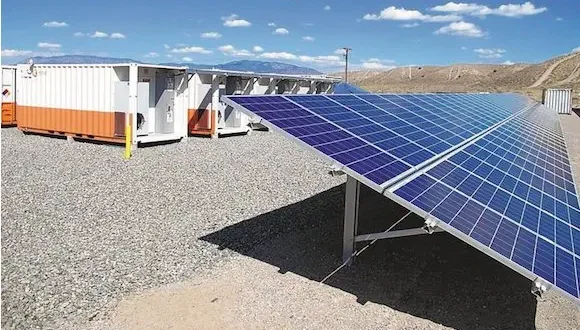Introduction to Solar energy
Image source: Origis Energy
The residential solar explosion
Photovoltaics in general have seen a meteoric rise, with exponential growth year on year. The residential uptake has been slower, but in 2017, 16.5% of Australian roofs have been equipped with solar panels and there is no sign of a slowdown.
The rapid uptake isn’t hard to explain – a 67% drop in costs since 2011 and spiralling electricity costs. Solar systems allow end-users to reduce their bills both by generating their own electricity but also by feeding excess power back into the grid for revenue from feed in tariffs (FITs).
Feed in tariffs were initially generous to promote solar adoption, but these circumstances have since changed. Great Britain dropped their FIT rates in January 2016, while Australia’s FITs are set state by state and subject to fluctuation. While installation costs are indeed lower, energy prices remain high or have increased.
Combining solar and battery energy storage
While exporting electricity to the grid is no longer such a lucrative prospect, using solar power to reduce one’s own energy consumption still brings price savings. When power is drawn from the electrical grid at a flat rate, there is no need to store that solar power.
Of course, this is clearly not the case – time-of-use rates vary depending on time of day and the season while punitive demand charges are applied to commercial energy consumers with high peak loads. Energy arbitrage – stockpiling electricity when it is cheap for self-consumption during peak times or to sell back to the grid at peak rates – requires energy storage systems.
Prof. Guoxiu Wang, director of the Centre for Clean Energy Technology at the University of Technology, Sydney, Australia, compares the adoption of battery energy storage to the first refrigerators.
“Before people invented the fridge, we produced food, we consumed food immediately,” says Wang, “With the development of appropriate electricity storage technology, the electricity is like our food – you can store it and whenever you need that electricity, you can use that immediately.”
An additional benefit is protection from power outages; last year’s natural disasters highlighted the importance of self-generation and storage. Rapidly falling battery storage costs – $230/kWh in 2016 compared to $1000/kWh in 2010 – have finally brought solar plus storage to commercial viability.
Large-scale solar and battery storage
Residential and commercial users are adopting solar plus storage to reduce their electricity costs, reduce their reliance on the grid and protect against blackouts. This phenomenon – known as ‘partial grid defection’ could spell a nightmare for utilities who rely on this energy use for their revenues.
But can utilities and grid operators make solar battery storage work for them? It seems so. Due to the advances in smart digital technology, individual buildings equipped with solar panels and storage can be Distributed Energy Resources (DERs). These DERs can be connected to become a virtual power plant (VPP).
Working together, each individual resource generates solar power and stores the excess energy. This power can be injected into the grid for many applications – frequency regulation, voltage support, reserve capacity and meeting peak demand surges. Flexible generating capacity for the grid operator is increased without building new generating assets.
While it might seem futuristic, this is already happening in several countries like Germany, the UK and Australia. Initially piloted connecting tens, hundreds and then thousands of homes, Tesla and the South Australian government have announced plans for a 50,000 home VPP. With a 250 MW generating capacity, this finally brings the technology to compete with fossil fuel generation.
More information about solar plus storage
https://www.theguardian.com/sustainable-business/2017/jun/13/battery-storage-and-rooftop-solar-could-mean-new-life-post-grid-for-consumers
https://www.mckinsey.com/business-functions/sustainability-and-resource-productivity/our-insights/battery-storage-the-next-disruptive-technology-in-the-power-sector
https://www.greentechmedia.com/articles/read/solar-plus-storage-can-beat-standalone-pv-economics-by-2020#gs._BtM5uE
If you want to know more about this and other topics directly from end users of energy storage technologies join us at one of these annual events: The Energy Storage World Forum (Grid Scale Applications), or The Residential Energy Storage Forum, or one of our Training Courses.




